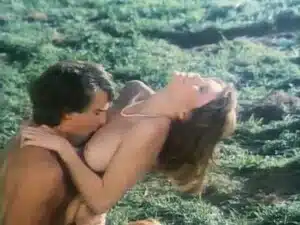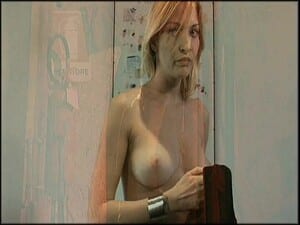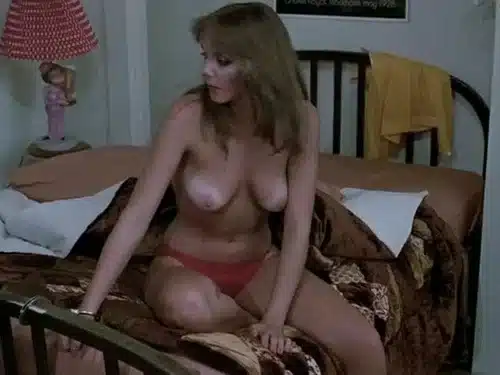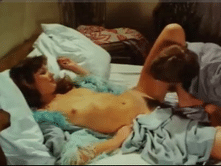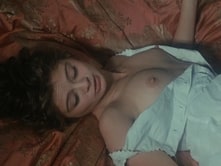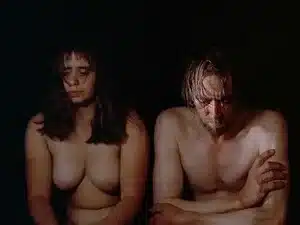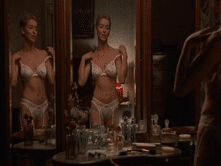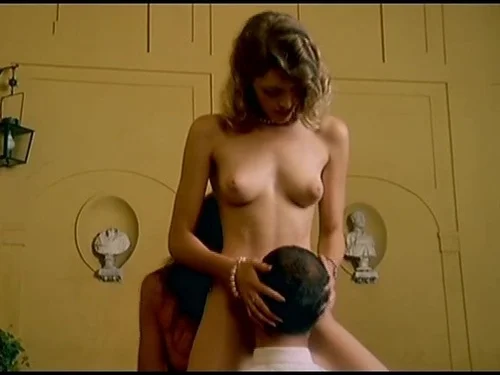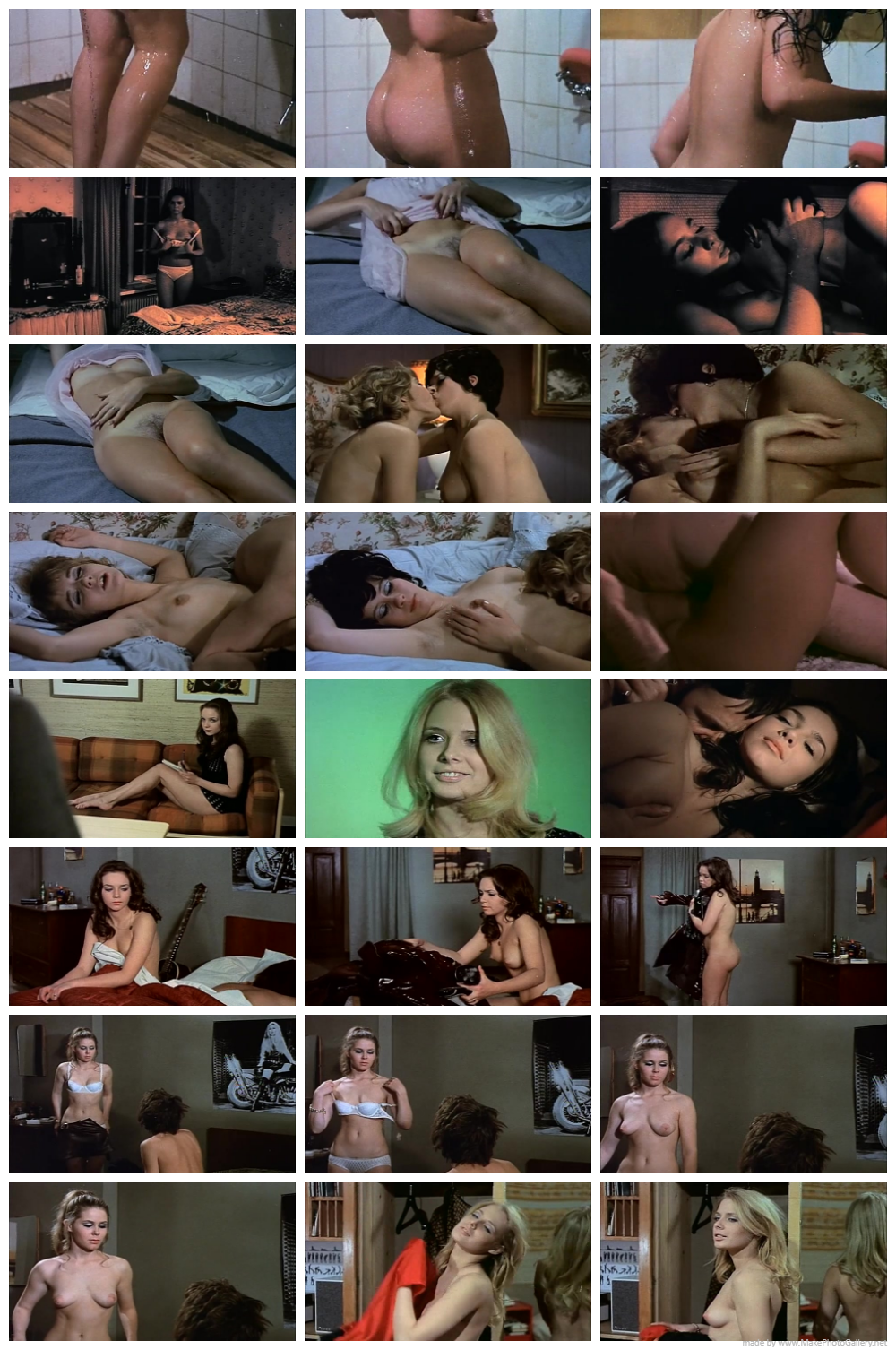
In 2002, RetroSeduction Cinema released the crown jewel of their catalog: a Special Edition of the 1967 Swedish classic INGA, starring the beautiful Marie Liljedahl. It has been a full two years since that disc first hit the market, and fans of director Joe Sarno and Liljedahl have been eagerly awaiting a lavish DVD edition of the sequel, THE SEDUCTION OF INGA (which was also released as INGA AND GRETA double-featured with the original for a “Super-Sexy Ingathon”). Those anxious viewers will be pleased to know this is a limited edition, numbered double-disc set well worth the wait, which delivers the goods and then some.
As Sarno’s only sequel, he introduces the film perfectly: opening with a shot of Inga’s night table, with a picture of Karl (her beau from the previous film), it is revealed that their relationship fell into pieces after they eloped from their small Swedish village. Karl went traveling, seeking a job, but left poor Inga to rot in a sleazy boarding house populated by hookers and the unemployed. Lothar, the chief pimp of the building, turns out to be the blonde teenager who attempted to rape her two years previously in her village (seen in INGA). Despite this rough history between them, he gets her a job as a secretary for Stig, a lonely writer obsessed with his previous nymphette girlfriend, Greta. Inga and Stig begin a steamy relationship, but she becomes torn when she is wooed by Rolf, the long-haired guitar player from the apartment next door.
With INGA, Sarno departed from his standard “don’t-feel-good” sexual melodramas to begin a new subgenre in his filmography: the sexual coming of age film, with young ballerina Marie Liljedahl in a stunning debut as the innocent schoolgirl who becomes a young woman at the hands of her aunt’s lover (in SEDUCTION, the English dub incorrectly claims it was Inga’s sister). The film was not a success in Sweden, where the film was shot, but became a smash hit in the United States, where Jerry Gross made a killing at the box office with a surefire sexy ad campaign. The years have been kind to the black-and-white original. Shot in color two years later, THE SEDUCTION OF INGA is an entirely different movie, one that doesn’t match with any of Sarno’s previous motifs. The film follows Inga, struggling to find happiness in her mundane life, but afraid of being tossed out of another relationship by another boy she gives her heart to. The pace is slow and the narrative often seems lifted out of any daytime soap opera, but with Sarno’s superb cinematography, a strong performance by Liljedahl (probably her best ever), and a surprising score by Benny Andersson and Bjorn Ulvaeus (future founders of 70s supergroup ABBA!), SEDUCTION OF INGA is a groovy sexploitation relic which is a bad introduction to newcomers to Sarno, but regular followers of the talent involved will be pleased with the results. Sarno would explore the theme of incest (which provides the blow-to-the-skull twist ending) vividly in several films through the 70s, including DADDY DARLING. One element to the film not often mentioned is the casting of blonde beauty Inger Sundh as the mysterious Greta. Inger would go on to make several Swedish and German sexploitation films, including I A WOMAN PART 3, DAGMAR’S HOT PANTS and FLOSSIE (forthcoming from Synapse Films), and she’s a superb bitchy vixen here. Fans of European garage beat music of the 60s should know the romantic lead is played by Tommy Blom, who was previously a member of The Tages (whose song “You Read Me Like an Open Book” is a highlight of Rhino’s “Nuggets II” boxed set)!
In the two short years between the INGA films, Marie Liljedahl had become a household name throughout Europe (or at least in thesleazier homes on the continent) thanks to appearances in Jess Franco’s EUGENIE…THE STORY OF HER JOURNEY INTO PERVERSION and GRIMM’S FAIRY TALES FOR ADULTS. Comparing and contrasting her performances in both INGA films reveals that she had developed as an actress, radiating a depth and intelligence she did not possess in 1967. She would appear in two more films in 1970 before calling it quits from the silver screen, letting Swedish contemporary Christina Lindberg take over as the #1 Scandanavian nymph at the box office. If she had wanted to, Marie could have been a much bigger star and more recognizable face in the world of cinema. It took two years for SEDUCTION OF INGA to see a Stateside release, leading to Marie being named Playboy’s Sex Star of 1971…despite the fact that she had been retired from films for some time by then!
With this two-disc special edition, RetroSeduction offers two versions of the film, one per disc. The first disc offers a fullscreen version of the feature (Version 1), with very fuzzy detail and washed-out colors. Skin tones are way off, the widescreen compositions are cropped, and the image is far too dark during most of the film. Disc two includes the “Grindhouse Cut” (Version 2), which is shown in 1.66:1 widescreen and looks stunning compared to Version 1. Bold colors and sharp blacks are nestled beneath a sheet of fine grain, and though there are splices where the sex inserts have been placed and blotches here and there, this is the preferable way to see the film. Strangely, this “Grindhouse Cut” doesn’t differ from Version 1 that much. Version 1 omits most of the non-Sarno sex footage (except for the graphic Inga masturbation scene performed by an obvious double), but these inserts weren’t that distracting in the first place. Version 1 may be the closest to Sarno’s original vision, but stick with Version 2, it’s far better-looking and is in the correct widescreen format. Unfortunately, at this time, Swedish-language versions of SEDUCTION OF INGA (reportedly 10 minutes longer than the U.S. versions) are scarce, and the disc producers have yet to uncover one. As the film was shot in Swedish, to be able to see and hear the performances in their native tongue would have helped judge the performances much more clearly, but as the film is presented now, it is still clear this is Liljedahl’s show all the way. The English audio, while awkwardly dubbed, is serviceable, but it’s clear something is missing in the translation in several sequences.
RetroSeduction called on the three primary forces behind SEDUCTION, director Joe Sarno, his wife Peggy Steffans, and star Marie Liljedahl, for the 20-minute documentary, “Innocence Lost: The Story of INGA.” Though the title is rather misleading (the piece focuses more on the sequel, only touching briefly on the original in comparison), this is a wonderful appreciation of the Swedish films of Joe Sarno and in particular the discovery of lovely Marie Liljedahl, who could have been and should have been a much bigger star than she became. The most thrilling aspect of this documentary is the opportunity is to finally see Peggy Steffans-Sarno as she is today. Without a doubt one of the most fascinating women in exploitation, Steffans still possesses an air of mystery about her, and her expressive eyes are just as effective as they were in Sarno’s films. Her distinctive gravelly voice could make reading James Joyce captivating. Marie Liljedahl, in interview footage shot at the same time she was interviewed for the Blue Underground disc of EUGENIE…THE STORY OF HER JOURNEY INTO PERVERSION, is quite heavier than her starlet days, but still has an adorable face and her quite listenable speaking voice makes one wish she had dubbed more of her exploitation films herself. Also like her EUGENIE interview, she reveals very little about shooting the actual film, but does explain why she retired from film, the experiences she had in-between the two INGA films, and how she still keeps in touch with Joe and Peggy today. Joe Sarno has quite a memory for a man of his age, and discusses shooting the film during the dark part of the year in Sweden and professes great affection for Liljedahl. As welcome as the documentary is, there is unfortunately little background information surrounding the concept of making a sequel (to date, it is Sarno’s only continuation of a previous film). While much is made on the packaging and elsewhere on the disc of the fact that composers Benny Andersson and Bjorn Ulvaeus would go on to form ABBA, neither Sarno nor Steffans reveal how they found the dynamic duo to compose the soundtrack to their film. And alas, no Inger Sundh stories. Those who enjoyed the audio commentary on the first INGA disc will find most of the good stories were already told in that piece, but seeing Sarno, Steffans, and Liljedahl reveal them on-camera is more rewarding.
